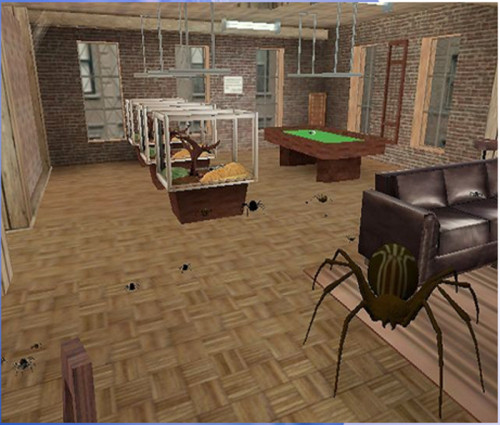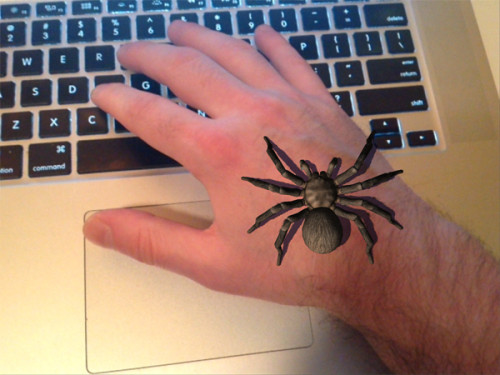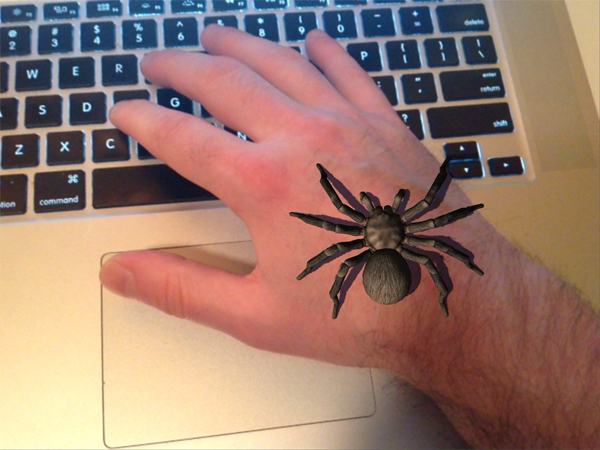My students often have to give presentations at the end of the semester, and public speaking is something that genuinely terrifies a lot of people. In addition to building a supportive, low-judgment environment, I try to give them a few tips for public speaking and how to approach it with minimal anxiety, but this deserves an entire course in itself.
And while it’s normal to be nervous about speaking in public, sometimes this anxiety turns into full-blown panic. If that’s the case every time you give a speech, you have a whole other set of problems that you probably need a therapist for.
But what if there’s an app for that?
Public Speaking for Cardboard, wants to “help you get over your fears by putting you in front of a virtual audience.” Because of its augmented reality component, the app could be a great alternative to sitting at home and reciting a presentation to your cat.
It makes sense that augmented reality could serve to assist in exposure therapy for phobias, but is it enough? If you have a debilitating fear of flying, and you use an augmented reality app that simulates flying, you still know that you aren’t actually flying.
It turns out that researchers have been studying this since the 90s, but more research has been done on exposure therapy through virtual reality than augmented reality. The difference between the two is slight, but important: virtual reality is a completely simulated environment, whereas augmented reality layers computer enhancements over the world around you. Despite these differences, the two are often employed together to provide a more immersive experience. Haptic feedback is one example of an augmentation, where vibration and sensation are added to virtual interaction with graphics. In this way, touch is used within a virtual reality setting in order to make the experience more lifelike.
For example, here is a very creepy spider in a virtual reality environment:

And here is a spider in an augmented reality:

The augmented reality spider is certainly a little scarier, I think, because augmented reality incorporates more of the living environment around you than virtual reality does. I looked at a number of recent studies that claimed effective results for both augmented reality and virtual reality for exposure therapy, but there was usually some claim that more stringent methodologies were necessary for further research in virtual reality environments. At the same time, a few recent studies on augmented reality for exposure therapy claimed that it provided more effective treatment than virtual reality, with similar results to real-life exposure.
The phobia example is an interesting one, because it implies that augmented reality can provide an actual reality: phobia treatment in an augmented environment may translate to real-life implications.
Here is a list of the studies I reviewed, if you’re interested:
Baus, Oliver, and Stéphane Bouchard. “Moving from Virtual Reality Exposure-Based Therapy to Augmented Reality Exposure-Based Therapy: A Review.” Frontiers in human neuroscience 8 (2014): 112. Web.
McCann, Russell A., et al. “Virtual Reality Exposure Therapy for the Treatment of Anxiety Disorders: An Evaluation of Research Quality.” Journal of anxiety disorders 28.6 (2014): 625. Web.
Morina, Nexhmedin, et al. “Can Virtual Reality Exposure Therapy Gains be Generalized to Real-Life? A Meta-Analysis of Studies Applying Behavioral Assessments.”Behaviour research and therapy 74 (2015): 18-24. Web.
Wrzesien, Maja, et al. “How Technology Influences the Therapeutic Process: Evaluation of the Patient-Therapist Relationship in Augmented Reality Exposure Therapy and in Vivo Exposure Therapy.” Behavioural and cognitive psychotherapy 41.4 (2013): 505. Web.





